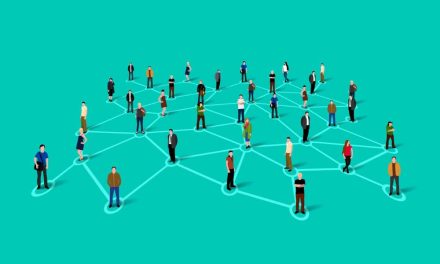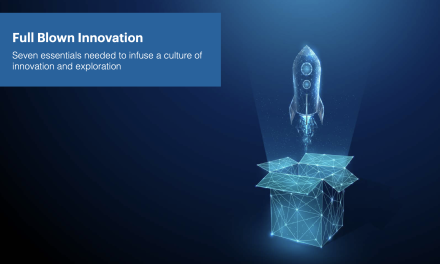In today’s rapidly changing business environment, organizations must move beyond mere resilience to become antifragile — thriving on disruption and growing stronger in the face of challenges. This white paper explores the essential characteristics that differentiate fragile organizations from antifragile ones, offering practical strategies for senior leaders to cultivate antifragility within their organisations, teams and personal lives.
By Graeme Codrington, 4 July 2024 (last updated 11 August 2024)
Beyond Resilience
One of the great earworms in music history is “I get knocked down, but I get up again; you never gonna keep me down” (Tubthumping by Chumbawamba). This is the very definition of resilience, and we need it more than ever in our ever-changing, disruptive world. But aren’t you tired of getting knocked down? Wouldn’t it be better if the difficulties, turbulence and chaos we face everyday benefited us, improved us and made us stronger?
Fragile organisations and teams crack and break under pressure. That’s why resilience is now a valued characteristic in a world of constant change. But resilience is not enough – it’s not enough to get knocked down repeatedly, even if we keep getting back up again. The opposite of fragile is actually “antifragile”. Introduced by Nassim Nicholas Taleb in his 2012 book, “Antifragile: Things That Gain from Disorder”, the term describes systems, organisations, or entities that not only withstand shocks and disruptions but actually improve and thrive because of them.
We need to go beyond mere resilience to build antifragile teams and organisations, which get stronger under pressure, gain from disorder and improve during disruption.

Examples of Antifragility
We don’t have this word in our language, but we do have examples of antifragility all around us, and we can build antifragility into our lives and work.
The best examples of antifragility are in the natural world. The muscles in our body are antifragile. When we engage in weightlifting or intense physical exercise, we create tiny tears in our muscle fibres. These tears, when allowed to recover, lead to the growth of stronger, more robust muscles. This principle is also seen in cardiovascular training, where pushing our limits improves endurance and performance over time.
In nature, if we try and grow trees indoors, they need constant support. But when trees are exposed to wind and weather conditions, they develop stronger trunks and root systems. This stress strengthens them, making them better equipped to withstand future challenges. Exposure to excessive stress, such as a hurricane, could be damaging to a point that they are irrevocably damaged, but just the right amount of stress, followed by a time of recovery and growth, develops antifragility.
Sector Adaptation
In the business context, antifragility can be observed in industries that learn and improve from failures. In MBA language we call it, ‘sector adaptation after individual failure’. Consider the aviation industry: when a plane crash occurs, investigators analyze the black box data to determine the cause. This information is then shared across the industry, leading to improved safety protocols and technologies – in fact, the faster the better.
The entire sector benefits and becomes safer through the lessons learned from individual failures. The same happens in almost every industry after the failure of one entity, as the remaining players all analyse what happened and make adjustments to improve the industry. The failed organisation was fragile and broke, but the surviving organisations have an opportunity to become more antifragile.

Fragile vs Antifragile Systems
To build an antifragile organisation requires a DNA adjustment that is more than cosmetic. A good way to discover the characteristics of antifragile systems is to compare and contrast fragile and antfragile environments.
1. Timelines and Planning Horizons
Fragile Organizations: Short-term Focused
Of course, all of us are always thinking about the future regularly, but in most clients we work with the planning cycles have been increasingly shortening. That was already happening before 2020, but Covid took it to unprecedented levels. It feels like a lot of people are in panic mode most of the time, and decisions feel rushed and frenzied. Fragile organizations tend to operate with a strong emphasis on short-term goals and immediate results. This focus is often driven by quarterly earnings reports, shareholder pressures, and an overarching desire to deliver quick wins. While this approach may yield immediate gains, it can also lead to a range of vulnerabilities.
A classic example is the case of Blockbuster. The company’s focus on immediate profitability and reluctance to invest in new digital technologies led to its eventual downfall when disruptive players like Netflix, which invested in long-term digital streaming technology, entered the market. We know examples like these well, but if you look at your planning cycles, your decision horizons and how short term your task lists are at the moment, do you feel you’ve learnt the lessons from others’ mistakes of short-term thinking? Or might you be in a period of fragility?
Antifragile Organizations: Open to Unexpected Futures
Antifragile organizations, on the other hand, embrace a long-term vision and strategic imagination. They engage in scenario thinking, constantly exploring multiple potential futures and preparing for the most likely ones. They encourage strategic foresight throughout the organisation, not leaving it to the senior leaders alone. This strategic foresight allows them to adapt to unforeseen changes and disruptions effectively.
This can be achieved by:
- Engage Everyone in Scenario Thinking: Regularly conduct scenario exercises to explore different future possibilities. While this practice obviously helps the organization prepare for various outcomes and develop strategies that can be quickly adapted as circumstances change, it also gets your team thinking about possible alternatives and different futures on a regular basis.
- Five Minutes from the Future sessions: Start your first team meeting of the week with one of your team members sharing a quick overview of a disruptive force that could impact your business in the future. Encourage them to identify opportunities rather than threats, and to stretch their imaginations rather than try to find an idea that is implementable in the near future (the point is to stretch our thinking, not submit a business proposal). Literally limit this to five minutes – just a short brain-gym exercise to get our creative juices flowing. Our team at TomorrowToday puts out a video every Thursday in a series we call “ThrowForward Thursday by Graeme Codrington” that you can use to inspire these short sessions with your team. You can download a discussion guide to some of our favourites here.
- Promote a Culture of Curiosity and Learning: Encourage employees at all levels to stay informed about industry trends, technological advancements, and broader economic shifts. And encourage them to stretch their curiosity to other areas as well. It doesn’t just have to be about work task skills only. Baloise, a Swiss-based insurer, used to give their staff the opportunity to do any development they wanted to, as long as they brought the learnings back to the business – and they saw the benefit of curious employees with a broad scope of interests.

2. Business Model Innovation vs Improvement Focus
Fragile Systems: Focusing on Optimizing Existing Systems
Fragile systems often concentrate on optimizing their existing processes and systems to maximize efficiency and profitability. While this approach can yield short-term gains, it tends to stifle innovation and adaptability. Organisations with this mindset may become overly reliant on established methods and technologies, making them vulnerable to disruptive forces. For example, Kodak’s focus on optimizing its film business prevented it from embracing digital photography, ultimately leading to its decline when digital cameras became the norm.
Antifragile Systems: Rethinking and Unlearning for Business Model Innovation
Antifragile systems, by contrast, continuously question and challenge their current practices, seeking opportunities to rethink and unlearn outdated approaches. This mindset fosters a culture of innovation and adaptability, enabling organizations to thrive in volatile and unpredictable environments. Real innovation in the 2020s is not merely about new products, services and markets, it is about your ability to re-imagine your business model itself.
“What do we need to rethink and unlearn” is a great question to ask your team on a regular basis. It invites them to consider alternative approaches and whole new ways of thinking, rather than merely focusing on optimising existing systems. It’s not that easy, though – we need to develop the skills of overcoming confirmation bias, availability heuristics and the hero complex, alongside many other cognitive biases that keep our brain from breaking out of its existing paradigms.
To develop this approach to rethinking and unlearning, senior leaders should consider the following strategies:
- Encourage a Culture of Continuous Learning and Exploration of New Ideas: Encourage employees to seek out new knowledge and skills, attend industry conferences (not just for their own work directly, but in related areas as well), and engage in cross-functional projects. For example, Google’s policy of allowing employees to spend 20% of their time on personal projects has led to the creation of major innovations like Gmail and Google News.
- Foster an Environment of Psychological Safety: Ensure that employees feel safe to experiment, fail, and voice unconventional ideas – even to the point of disagreeing with you as their boss. Creating an environment where team members are not afraid to take risks can lead to breakthrough innovations. Periodically assess existing processes and systems to identify areas that need rethinking or unlearning. Encourage teams to challenge the status quo and propose radical changes when necessary.
- Adopt Agile Methodologies: Implement agile methodologies to increase flexibility and responsiveness. Agile frameworks, such as Scrum or Kanban, encourage iterative development and rapid prototyping, allowing organizations to quickly adapt to changes and incorporate feedback.
- Diversify the Offerings: This might be a very obvious point to make, but organisations that have only a few revenue streams in a limited set of markets are much more at risk of changing market conditions than those that are diversified. Even building optionality into business plans can add a level of diversity that is valuable. It might even be worthwhile approaching strategies with the attitude of an investment fund: rather than betting on a single company, spread your investments across multiple companies or sectors, and keep your options open.

3. Decision-making Structures
Fragile Systems: Centralized Control
Fragile organisations typically operate with centralised decision-making structures where authority and control are concentrated at the top. This hierarchical approach can lead to inefficiencies and slow response times, as decisions must pass through several layers of approval before action can be taken. Of course, the upside is that it is less risky and we get more consistency in our outputs and work – if that’s what is important to your organisation then you need to keep this structure. But if you realise that the fast changing world you work in needs more rapid and adaptive responses, then this may need to be reconsidered. Moreover, centralized control can stifle creativity and innovation, as lower-level employees may feel disempowered to contribute ideas or make decisions.
A notable example of the limitations of centralized decision-making is Nokia, whose rigid hierarchy and slow decision-making processes hindered its ability to respond to the rapidly changing smartphone market, ultimately contributing to its decline. The bigger a company gets the more likely it is to prioritise centralised decision-making and build bureaucracies.
Antifragile Systems: Distributed Decision-making
In contrast, antifragile organizations distribute decision-making authority across various levels of the organisation – specifically they try and push decision-making as close to where the work is actually being done as possible. This means empowering people to make decisions, and creating clear understanding of decision rights, while fostering a culture where transparency is valued and information flows freely. This decentralised approach allows for quicker, more flexible responses to changes and challenges. By empowering employees at all levels to make decisions, these organisations foster a culture of innovation and accountability.
A prime example is Toyota’s lean manufacturing system, which empowers workers on the assembly line to stop production if they identify a defect. This practice not only improves quality but also encourages continuous improvement and problem-solving at all levels.
To cultivate antifragile decision-making structures, senior leaders should implement the following strategies:
- Empower Employees: Encourage autonomy by granting employees the authority to make decisions relevant to their roles (see next section for even more on this). This empowerment can be achieved by setting clear guidelines and providing the necessary resources and training. For instance, Ritz-Carlton hotels empower every employee to spend up to $2,000 to resolve a guest issue without needing managerial approval, leading to exceptional customer service and quick problem resolution.
- Promote Cross-functional Teams: Create cross-functional teams that bring together diverse skill sets and perspectives. This collaborative approach enables faster, more informed decision-making and fosters innovation. Adopt organizational structures that support decentralization, such as holacracy or networked teams, that reduce bureaucracy and allow for more dynamic decision-making processes.
- Exposure to Other Parts of the Organisation: To support increased integration and awareness, organisations should create opportunities for people from different departments to sit in on meetings outside of their immediate functional role. For example, the compliance team can sit in on technical meetings or people on the risk team can attend marketing meetings. This will give people a much broader sense of issues other departments in the firm are facing.
- Encourage a Culture of Trust and Accountability: Foster a culture where trust and accountability are paramount. Encourage leaders to delegate decision-making authority and hold teams accountable for their outcomes. This approach not only speeds up decision-making but also builds a sense of ownership and responsibility among employees. Netflix’s culture of freedom and responsibility is a prime example, where employees are trusted to make decisions in the best interest of the company.
- Create Continuous Feedback Loops: Companies typically prepare a business plan at the beginning of the year and then check it at the end of a financial quarter, or do employee reviews annually. We need to move towards more ongoing updates of these, based on continuous (at least monthly) reviews and updates.

4. Autonomy
Fragile Organizations: Bureaucratic and Private Leadership Discussions
As we highlighted in the previous section, fragile organizations often operate with high levels of bureaucracy and maintain a culture where senior leadership discussions are kept private. This approach centralizes decision-making power and creates layers of procedures and red tape, which can hinder responsiveness and agility. In such environments, employees typically have limited access to strategic decisions and feel disconnected from the larger organizational goals. This lack of transparency and excessive bureaucracy stifles innovation and can lead to disengagement among employees.
Antifragile Systems: Built on Autonomy and Psychological Safety
Antifragile systems, in contrast, prioritize autonomy and psychological safety, empowering employees to make decisions and contribute to the organization’s strategic direction. Employees are encouraged to take initiative and are trusted with significant responsibilities, which enhances their engagement and sense of ownership. Autonomy does not mean that everyone can do what they want – it is about trusting your people to organise themselves in a way that allows them to give their best. This can include anything from flexible working hours to pre-approved expense accounts.
One of the most powerful leadership models related to this issue was developed by David Marquet, and documented in his book, “Turn the Ship Around!: A True Story of Turning Followers into Leaders” (2019). It is called “intent-based leadership” and requires your team to firstly all have a clear understanding of the outcomes you’re aiming to achieve, then to have the competence to do the work needed, and thirdly for the leader to turn instructions into questions starting with “what do you intend to do?” It is well worth watching Marquet’s summary video of his approach here.
Note again that “autonomy” does not mean “independence”. In fact, it is worth noting in this context that antifragile systems are pretty good at networking and focus on building a healthy ecosystem. Organisations do not operate in isolation and very few would be able to turn shocks into gains on their own. To succeed under adverse conditions, organisations need a supportive network of clients, business partners, advisors, and firm allies who can share information, signal emerging opportunities and threats, and help shift directions or try new things.

5. Excess Capacity and Peak Performance
Fragile Systems: Efficiency Above All Else
Fragile systems are often designed with a primary focus on efficiency, aiming to minimize waste and maximize output. While this approach can lead to impressive short-term gains, it leaves little room for flexibility or adaptation when disruptions occur. Organisations that prioritize efficiency above all else often run with minimal slack, meaning they lack the necessary buffer to absorb shocks or handle unexpected challenges. A vivid example of this is seen in many just-in-time (JIT) manufacturing setups. While JIT can reduce inventory costs and increase efficiency, it also makes supply chains highly susceptible to disruptions. The COVID pandemic exposed the vulnerabilities of these hyper-efficient systems, as many companies faced significant delays and shortages when global supply chains were disrupted.
Antifragile Systems: Focusing on Peak Performance
Antifragile systems, on the other hand, prioritize peak performance over mere efficiency. These organizations recognize that innovation, creativity, resilience, and agility thrive in environments where there is excess capacity. By maintaining a buffer or slack, antifragile organisations can better absorb shocks, adapt to new challenges, and seize opportunities that arise from disruption. For instance, 3M’s renowned “15% rule,” which allows employees to dedicate 15% of their work time to projects of their own choosing, has led to significant innovations, including the creation of Post-it Notes.
In addition, the measurement system for ensuring staff are contributing their best needs to shift from getting the MOST out of people, to getting the BEST out of them. This needs to take into account a wide range of issues including physical and mental health and wellbeing, time off, holidays, sleep, etc. We need to think longer term about these issues, ensuring the jobs people have add to their wellbeing rather than detract from it.
To develop antifragile systems that focus on peak performance, senior leaders should consider the following strategies:
- Create Buffer Capacity: Design systems with built-in slack to handle fluctuations and unexpected demands. This buffer allows the organization to respond swiftly to disruptions without compromising overall performance. For example, Toyota’s practice of maintaining extra inventory at strategic points in its supply chain helps absorb shocks and ensures continuous production, even during disruptions.
- Create Redundancy: Ensure multiple people have the necessary skills and knowledge to step in when someone is unavailable. Any systems and infrastructure should have fail-safes and backups to handle outages and failures. This is asking a lot of companies that are measured on efficiencies and have quarterly reporting on profit. It might seem a bit extravagant in the short term, but if (and when) difficulty and disaster strike, this might be the difference between survival or collapse. As Taleb notes in his book: “Redundancy is ambiguous because it seems like a waste if nothing unusual happens. Except that something unusual happens — usually.”
- Practice via negativa: According to Taleb in his book, “the first step towards antifragility consists in first decreasing downside.” We do that through practicing via negativa — a Latin phrase that encourages is to focus our time on subtracting habits, practices, things, people that fragilize us, rather than looking to add new activities, systems or practices.
- Invest in Employee Development: Focus on building a versatile and skilled workforce capable of adapting to various roles and challenges. Providing ongoing training and development opportunities not only enhances employees’ capabilities but also increases the organization’s resilience and agility. IBM’s emphasis on continuous learning and skill development has enabled the company to pivot and thrive in rapidly changing technology markets.

6. Do Hard Things
In his book, “Do Hard Things: Why We Get Resilience Wrong and the Surprising Science of Real Toughness” (2022), Steve Magness shares his decades long research into the science of human performance. He is a coach for ultra long distance runners, and has applied his methods to members of the military and many other arenas of performance. His principles are useful when considering antifragility.
We cannot shy away from doing the hard things that might need to be done when we are facing a tough time, or preparing for tough times. But toughness is not in the authoritarian “do what I tell you” approach some of us had from our parents or from a sports coach. Those approaches might get short term compliance, but they don’t build true toughness for the long haul. I encourage you to read Magness’s book, but four key principles of true toughness stand out for me (these are my words, not his):
- Ditch the Facade and Face Reality – we need to accept both the reality of the difficult times we are facing (or could face), and need to accept what we are capable of achieving in that environment. We need clear pictures of where we are and what we are going to have to do.
- Give Control – Our level of control changes how we respond to stress. When we have a sense of control, our stress alarm is quieter and easier to shut off. This is why autonomy is so important – it’s about giving control to your team, and not managing the difficulties for them.
- Turn the Dial so You Don’t Spiral – this is about doing lots of small adjustments to make sure you are not overwhelmed by the difficulty of the task. Rather make small adjustments early, rather than waiting until you’re forced to make a big one that might be too big to handle.
- Keep Your Eye on the Prize – if we expect to grit our teeth and tough it out through a difficult period, we need to have a very solid “why”. We need to have a purpose – but not a blah-blah corporate purpose written by a marketing consultant. It needs to be a genuine and heartfelt reason to keep going through the tough times to get out the other end. This might be a difficult thing to help your team discover – but it is much better to do so before you hit the difficult times. Ensure you know your team’s “why” and help each member of your team know what motivates them and why it does.
We need to think of developing toughness rather than resilience. And that means being willing to do hard things.

7. Diversity vs Conformity
Fragile Systems: Valuing Conformity
Fragile systems often prioritize conformity and uniformity, seeking to minimize deviations from established norms and practices. This approach can create a predictable and controlled environment, but it also stifles creativity, innovation, and adaptability. Organizations that value conformity tend to discourage diverse perspectives and alternative approaches, which can lead to groupthink and a lack of critical thinking. An example of this is seen in some traditional corporate cultures where hierarchical structures and rigid procedures prevent the free flow of ideas and innovation. A stark illustration is the downfall of BlackBerry, which failed to adapt to the rapidly evolving smartphone market due to its rigid adherence to existing technology and business models, while competitors like Apple embraced new ideas and diverse approaches.
Antifragile Systems: Valuing Diversity
Antifragile systems, by contrast, recognize that diversity is a key driver of resilience, adaptability, and innovation. These organizations actively seek to include a wide range of perspectives, experiences, and skills, understanding that diversity enhances problem-solving and decision-making processes. Diversity in an organization mirrors the ecological principle where varied species contribute to the ecosystem’s overall health, resilience, and ability to adapt to changes. For instance, Google’s commitment to diversity and inclusion has not only improved its work environment but also driven its innovative capabilities. By valuing and integrating diverse viewpoints, Google has been able to create products and services that cater to a global audience with varied needs.
To foster diversity and reduce fragility, senior leaders should implement the following strategies:
- Promote Inclusive Leadership: Encourage leaders at all levels to champion diversity and inclusion. Inclusive leaders actively seek out and value diverse perspectives, ensuring that all voices are heard and considered in decision-making processes. Training programs and workshops on inclusive leadership can help develop these skills. For example, Johnson & Johnson emphasizes inclusive leadership as a core component of its management training, fostering a culture where diversity thrives.
- Implement Diverse Hiring Practices: Develop recruitment strategies that aim to attract and hire individuals from a wide range of backgrounds. This includes not only demographic diversity but also diversity in skills, experiences, and perspectives. Companies like IBM have implemented robust diversity hiring initiatives, resulting in a more innovative and adaptable workforce.
- Create Safe Spaces for Dialogue: Establish forums and channels where employees can share their ideas and perspectives without fear of judgment or retribution. Psychological safety is crucial for fostering an environment where diverse viewpoints can flourish. Organizations such as Microsoft have created employee resource groups (ERGs) that provide support and advocacy for various communities within the company, encouraging open dialogue and innovation.
- Measure and Monitor Diversity Initiatives: Establish metrics to track the effectiveness of diversity and inclusion initiatives. Regularly review these metrics to ensure that diversity goals are being met and to identify areas for improvement. Salesforce, for example, publishes an annual Equality Report that details its progress on diversity and inclusion, holding the company accountable and transparent in its efforts.

8. Adaptability
Fragile Systems: Reliance on Detailed Planning and Control
Fragile systems often depend heavily on meticulous planning and stringent control mechanisms. Fragile people and systems seek to eliminate variability, noise, and tension. Because fragile people and systems don’t have built-in responses to stress and variability, they try to eliminate it completely (and, of course, fail in the attempt).
While detailed planning can provide a sense of security and predictability, it also limits the organization’s ability to adapt to unforeseen challenges and changes. These systems struggle with surprises and disruptions because their rigid plans leave little room for flexibility. For example, during the early 2000s, Blockbuster’s strict adherence to its traditional business model and failure to adapt to the digital transformation in the entertainment industry led to its eventual bankruptcy. The company’s rigid planning and control mechanisms made it difficult to pivot in response to emerging trends like online streaming, which competitors like Netflix capitalized on.
Antifragile Systems: Focus on Adaptability and Learning
Antifragile systems, in contrast, emphasize adaptability and continuous learning over rigid planning. These organizations thrive in dynamic environments by fostering a culture of experimentation and iterative improvement. Instead of relying on detailed upfront planning, they focus on flexible strategies that allow them to respond swiftly to changes. For instance, the software development industry widely adopts agile methodologies, which prioritize adaptability and customer feedback over exhaustive planning. Companies like Spotify and Airbnb exemplify this approach, regularly iterating on their products based on user feedback and market trends, allowing them to stay ahead of the curve and continuously innovate.
To build an antifragile organization that focuses on adaptability and learning, senior leaders should consider the following strategies:
- Foster a Culture of Experimentation: Encourage a mindset where experimentation and risk-taking are valued. This can be achieved by allocating time and resources for pilot projects and innovation initiatives. Google’s “20% time” policy, which allows employees to spend a portion of their workweek on innovative projects, has led to the creation of successful products like Gmail and Google News.
- Reduce Dependency on Detailed Plans: Shift focus from exhaustive upfront planning to adaptive strategies. Encourage teams to set broad goals and milestones while remaining flexible in their approach. This allows for adjustments based on new information and changing circumstances. Amazon’s practice of working backwards from the desired customer experience to develop products exemplifies this flexible approach to planning.
- Keep Your Options Open: Increase optionality in your life. When volatility and chaos increase, it’s the people and systems with the most options who are the most antifragile.
- Implement Feedback Loops: Establish mechanisms for regular feedback and reflection. This can be done through retrospectives, performance reviews, and customer feedback channels. These feedback loops enable the organization to learn from successes and failures and make informed adjustments. Toyota’s continuous improvement (Kaizen) philosophy is a prime example of using feedback loops to drive incremental improvements and adaptability.
- A final interesting piece of advice from Taleb in his book is: “Never take advice from someone who doesn’t have ‘skin in the game’.” He gives a particular example of investment advisors who know their investments are not good long term bets, but stick with them anyway in order to get their bonuses and knowing there are no personal consequences if there’s a downside or bust in the future. Adaptability is not a spectator sport, and people who have no exposure to the downsides should not be making decisions about how to build it.

Conclusion
In an increasingly volatile and uncertain world, leaders must focus on cultivating antifragility in their teams and organizations. By encouraging a culture of learning, building decentralized systems, embracing diversity, developing a strong feedback culture, and planning for the unexpected, leaders can help their teams and organizations not only withstand adversity but also grow stronger and more capable in the face of challenges.
Further Reading
- Nassim Nicholas Taleb, “Antifragile: Things That Gain from Disorder” (2012)
- Steve Magness, “Do Hard Things: Why We Get Resilience Wrong and the Surprising Science of Real Toughness” (2022)
- Edzo Botjes, Martin van den Berg, Bas van Gils, and Hans Mulder, “Attributes relevant to antifragile organizations” (2021) – Read here
- Thomas Euler, “The Antifragile Organization” (Medium, 2015) – Read here
- Brett & Kate McKay, “Beyond “Sissy” Resilience: On Becoming Antifragile” (Updated 2023) – Read here
- Darin Bifani, “Unbreakable: Ten Ways to Build an Antifragile Company” (2023) – Read here
- David Marquet, “Turn the Ship Around!” (2019)
- Graeme Codrington, “Summary: Antifragility in the Workplace: A Guide for Leaders” (2023) – Read here





